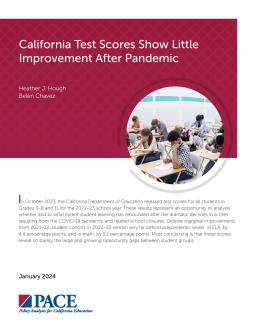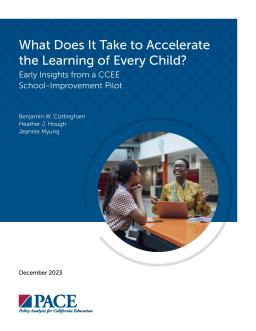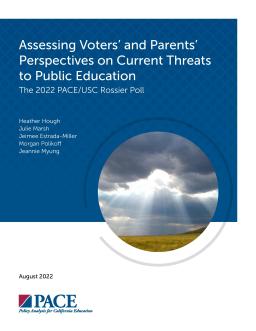INITIATIVE
COVID-19 Recovery

COVID-19 has induced an unprecedented crisis in education in California. Due to the pandemic, a variety of academic, health, and social-emotional needs will emerge among California’s students. Pre-existing achievement gaps in California will likely be exacerbated as a consequence of inequities in learning opportunities across the state. PACE has activated a network of researchers to work with policymakers and education leaders to bring evidence to bear in helping California’s systems become stronger to support students in the aftermath of the crisis. The PACE COVID-19 Recovery Initiative will draw on research to inform a range of topics related to building system capacity for recovery in California schools in the COVID-19 context.
Topics Related to this Initiative
Related Commentaries
Cost-Effectiveness Analysis Can Help Districts Plot Their Financial Course
Expanded Learning Partnerships to Help Reinvent School for Upper Grade Students
Serving Students Experiencing Homelessness During the Pandemic
- ‹ Previous
- 4
- 5
- 6
- Next ›
Related News
November 4, 2024 | Berkeley Political Review
Recent Initiative Publications

In October 2023, the California Department of Education released test scores for all students in Grades 3–8 and 11 for the 2022–23 school year. These results represent an opportunity to analyze whether and to what extent student learning has…

Early Insights from a CCEE School-Improvement Pilot
Student achievement in California has not rebounded after the precipitous declines of the COVID-19 pandemic, with English language arts (ELA) and math scores remaining well below prepandemic levels. Student attendance has declined dramatically, and…

Declining student enrollment is leading to a loss of revenue in many California school districts. To address ongoing budget shortfalls, many districts have consolidated or shuttered schools,and others are contemplating doing so. A new report and…

The 2022 PACE/USC Rossier Poll
The 2021-22 academic year in California was challenging for public education due to eight issues that threaten student learning, schools, and public education itself, including gun violence, declining enrollment, and long-term funding inadequacy.…



